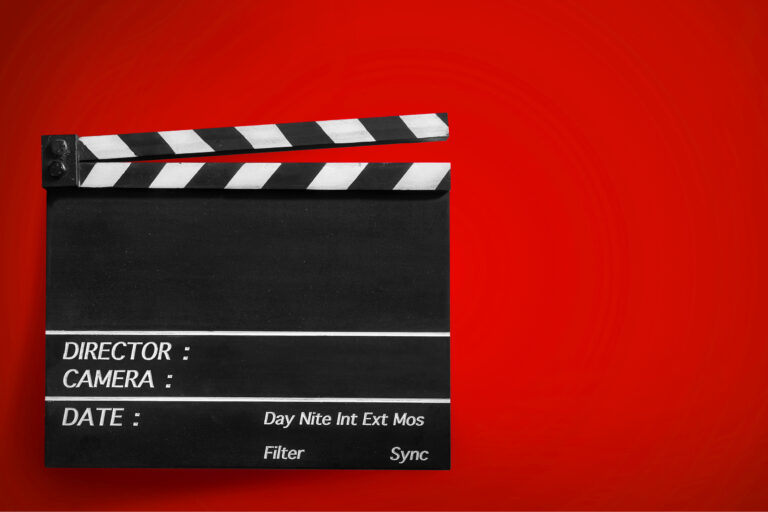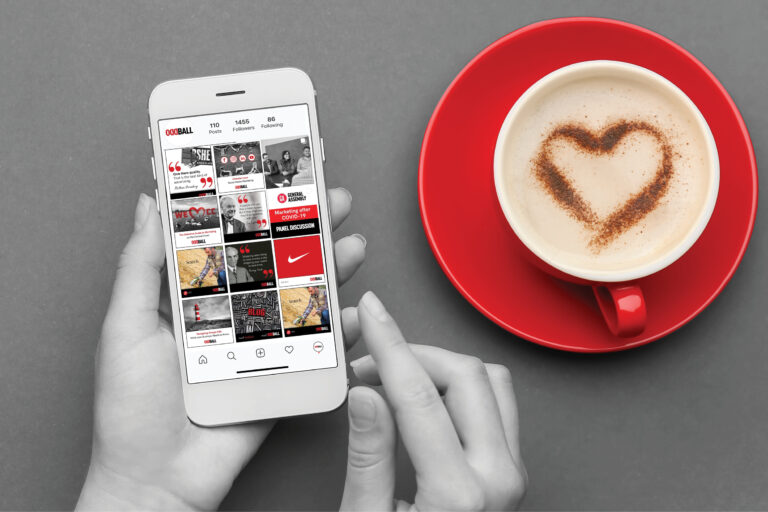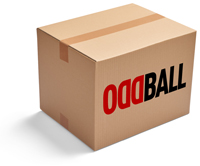You’ve probably written an email before…and you’ve probably also regretted one that you’ve sent! Don’t worry, we’ve all been there.
The truth is, writing an email is easy, but writing a good one is deceptively hard.
Well the good news is, you’ve come to the right place.
Learn how to write good emails in just 10 steps and transform your email marketing campaigns.
The power of email marketing
If you aren’t taking your email marketing very seriously, you should be.
Email marketing has several advantages that no other marketing channel can match:
- The return on investment (ROI) can be immense, given the only cost to send an email is your time, and the subscription fee to your platform
- It’s guaranteed to hit a recipient’s inbox so you aren’t relying on them finding it, and you can choose to send when your audience is the most receptive
- The reader has registered interest in your product or service by providing their email address, so you are always reaching a somewhat interested audience
- You can set automations that run in the background to nurture your leads for you
- Email is perfect for business to business (B2B) marketing
All of these benefits are great, but success hinges on one thing – whether you know how to write good emails or not.
Because if no one is reading them, what’s the point?
How to write good emails
1. Plain text vs images
Before you start writing, you need to consider what kind of email you want to send.
Broadly speaking, there are two kinds of emails: plain text and emails with images and graphics. They both have different strengths.
Plain text emails are ideal for:
- Making emails feel personal or familiar
- Communicating important information without any visual distractions
- B2B communications, especially between business partners or associates
Emails with images are ideal for:
- Sales emails that show off a product
- For when you want a ‘wow factor’ for your email
- B2C where you can reinforce brand awareness and recognition with visual themes and logos
Make a decision early because how you write each type may differ. In a plain text your content needs to carry the email, whereas with images it may only be there to support what you are communicating visually.
2. Tone of voice
Another thing to decide before writing is your tone of voice. Think about how you want your brand to come across, and what kind of tone your audience would expect.
For instance, if your business sells clothes designed for teenagers and young adults, keep your content informal and fun, rather than formal and serious.
Or, if you send emails to different people, such as business partners and customers, these groups should sound different. Your business partner emails can be more familiar to emphasise the relationship, while your customer emails can be more salesy.
3. Choose ONE action for your reader to complete
Many people make the mistake of writing overwhelming emails with too many actions. Don’t be one of them.
Think of the journey your reader should take through your email. First, they see an intriguing subject line that gets them to open it. Next, they flow through the text, learning about an action and what they need to do. Last, there is a button or link that helps them complete the desired action.
Makes logical sense, right?
Well now picture an email with a subject line that has to cover multiple points, with buttons and links throughout the email all taking the reader to different locations. It’s much more messy, and much less powerful.
4. Use your subject line and preheader text to complement each other
Don’t rush your subject lines, they are the bait on your hook. You wouldn’t fish without bait, so why would you send an email without a subject line?
A good subject line is short, Mailchimp recommends less than 60 characters, and no more than 9 words. That’s not a lot of real estate for you to get your message across. That’s why using your subject line and preheader text together works so well.
Make the subject something intriguing. It might be a question, or a bold statement. Something that peaks interest without giving away the answer is perfect. Then elaborate more in the preheader text, still without giving away too many details.
For example, an email we sent recently featured the following combination.
Subject line: How Google’s helpful content update affects you
Preheader: Google’s new helpful content update is good news for good writers, and bad news for bad ones.
The subject line directly addresses the reader and tells them that an update will affect them, but stops short of actually telling them how. Then the preheader text provides more context, revealing that it applies to their written website content.
It also suggests there is a difference between ‘good’ and ‘bad’ writers to spark interest. It naturally makes the reader wonder which kind of writer they are.
In just two lines you’ve grabbed the reader’s attention, introduced a potential problem and explained what it’s about. Now they need to open your email to get the solution.
5. Personalise your greeting with a merge tag
Personalising your emails using merge fields helps make the reader feel a connection to you and your brand. It also helps differentiate you from the spam emails that your readers are bombarded with on a daily basis.
Most email marketing platforms have merge tags for a number of greetings. You can have people addressed by their first, last or full names, or even custom titles that you can input. Simply select the corresponding merge tag, and it will pull the person’s title from your imported list.
Just remember, you need to have the data for the tag to work. For example, if you use the first name tag, but your contacts only have their last names recorded in your list, it will come up blank.
6. Your opening paragraph needs to hook your reader
The opening paragraph needs to be emotive and engaging. To return to the fishing analogy, your subject line is the bait, but your opening paragraph is the hook.
Opening an email doesn’t take much time, but sticking around and reading the whole thing is a commitment. Think about how often you open an email, read those first few lines and then click out. It’s because the email didn’t hook you!
Try using some narrative devices here, like writing a snippet of a story that gets your reader to picture themselves in a situation.
Think about the beginning of this blog. We got you to think about a time you sent a bad email, which then made you more likely to read this blog about how to write good emails. You can write the hooks of your emails the same way.
Other good examples are jokes or questions, where the punchlines or the answers that come later prompt the reader to continue.
7. Provide value
This may be the most important rule to live by in the email marketing world. If there is one sure thing that will make people unsubscribe or stop reading, it’s not saying anything of value in your email.
If you’ve used intrigue to lure someone into your email, you must provide the answer or the payoff that they are expecting. Feeling stupid and having their time wasted are two things that your customers definitely aren’t going to enjoy.
Making this mistake can be brand damaging. You’ve hooked the fish, but then you’ve failed to reel it in. Now, not only is that fish irritated, it’s never going to fall for that bait again. It only takes one bad email to turn a customer away from your brand forever.
Every email you send should provide value to your reader, no matter the subject. If you are raising a problem, offer a solution. If you are announcing new information, make sure to actually share it. If you are selling something, explain what it is and what it does – and why the customer needs it.
8. Be concise
It’s hard to say how long an email should be. Newsletters are designed to communicate a lot of information so they can afford to be longer, whereas short messages should be, go figure, short.
Studies suggest the average email length is 434 words, but the spectrum is vast. For instance, 11.4% having more than 904 words which is a length that is more suited to blog writing.
As a general rule, for email marketing and just writing in general, only write what is necessary for your copy to sell. If you don’t think a sentence or a word adds value, cut it. If you follow this rule, you’ll end up with emails that are exactly as long as they need to be.
With that said, be aware that more than 46% of people open emails on mobile, so make sure you avoid long paragraphs. Try to have plenty of line breaks to keep your content digestible.
You should also make sure you frontload your email with the most important information. That way, if the reader leaves before the end they’ll have taken away the most valuable messages.
You should also clearly signpost things like key prices, dates or locations, and make sure you work them into the paragraph that follows the hook. Ideally, they will form part of the answer or punchline that the hook sets up.
9. Have a strong CTA
The call to action (CTA) is the end of your reader’s journey. This is where you want them to interact with a button or a link, often to your contact pages.
A good CTA will offer a very short summary of the email, such as briefly reiterating the issue/information, and then highlighting your link as the path to solving/learning it.
Where a good CTA really shines, however, is in how it creates a sense of urgency or scarcity. Once someone closes an email you have to assume they aren’t coming back.
If you signposted correctly throughout the body text, you should have some key prices or dates that you can reiterate in your CTA. See if you can create deadlines, like ‘limited time offers’, ‘tickets are selling fast’ or ‘act now to prevent etc from happening’.
10. Proofread!
This should be a no brainer! Unlike websites, blogs, and Google Ads, once you send an email you can’t make any changes. It’s out in the wild, and you have to live with any embarrassing mistakes.
At the very least, send yourself a test and check that your links and UTMs are working, and your fonts and formatting are appearing correctly.
Do you want someone to write good emails for you?
Consistently writing engaging emails takes skill, practice and time. For many business owners, that’s time they simply don’t have to spare.
If you want to focus on your business and let Oddball Marketing handle your emails for you, our professional writers can craft effective content that will hook your readers.
If you want a sample of our work, enter your email address in the form below to enter our mailing list.
To contact us to enquire about our email marketing services, visit our website.






